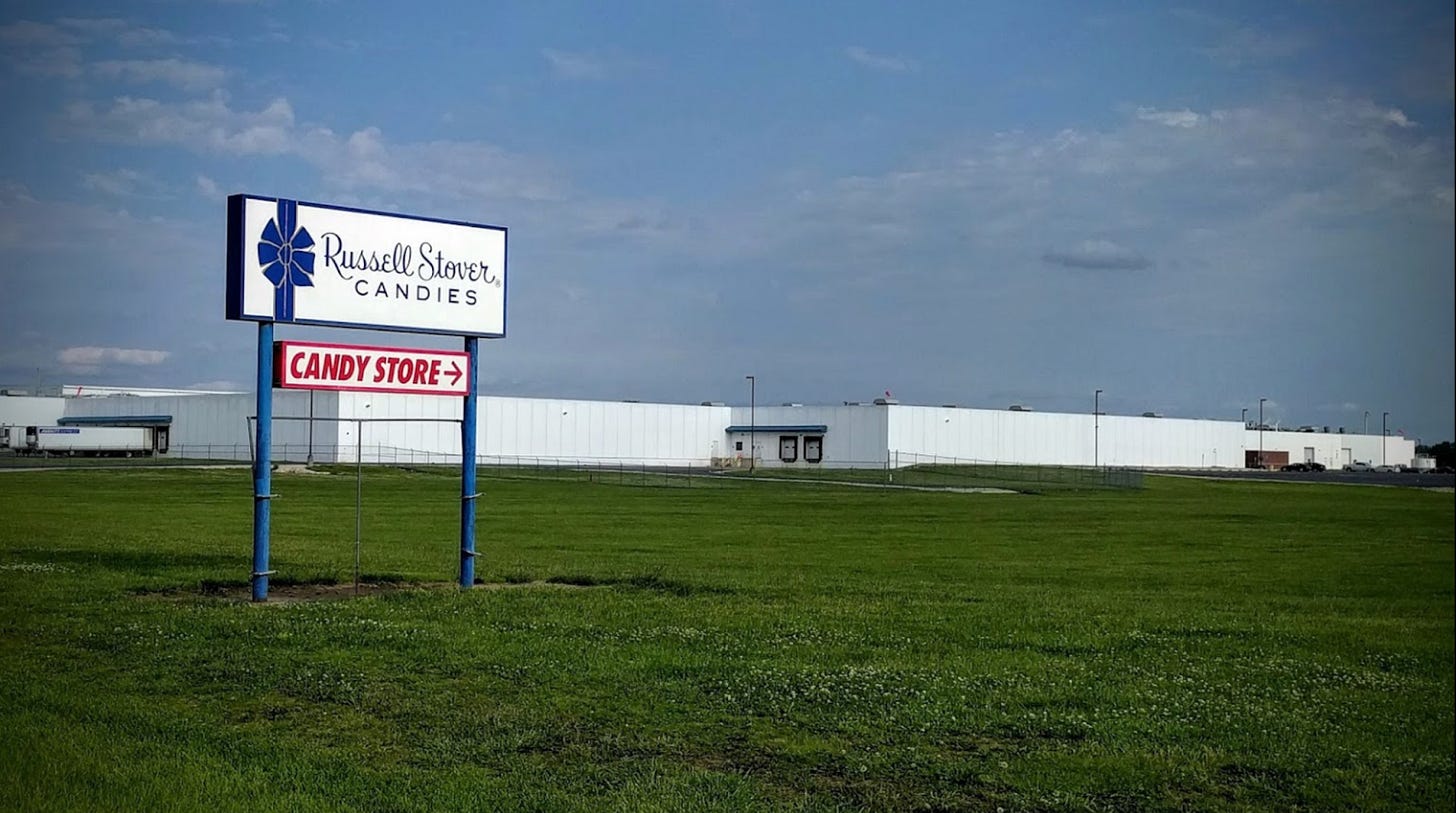Faced With Worker Shortage at Kansas Facility, Russell Stover Turns to Prison Labor
Iola manufactory employs 150 work release inmates from nearby Topeka Correctional Facility—program started in April after production declined due to lack of workers
Candy maker Russell Stover has faced labor shortage issues at its facility in Iola, Kansas for years.
In 2021, the company turned to prison workers to make up the difference.
Today, 150 inmates from the Topeka Correctional Facility, a nearby women's prison, work at the store. It’s part of a larger, decades-long work release program that sends inmates to work for companies around the state that critics like Brandilyn Parks, founder of the Kansas Coalition for Sentence and Prison Reform, say is exploitative.
"Prison labor hurts both the community and the incarcerated by taking jobs from the community, setting the incarcerated up for failure because employers will not hire those with a felony," Parks said. "Prison labor only benefits the prisons, period."

Your support makes these stories possible. Sign up or subscribe at the link.
A decades-long practice
Companies in Kansas have been using prison labor for decades.
Russell Stover is the 42nd company to join the state’s work release program, Randall Bowman, executive director of Public Affairs for the Kansas Department of Corrections, told me.
“Each of these 42 employers is providing an opportunity that improves the operation of facilities and increases the chances for success upon release, making our residents, staff, and all Kansans safer,” Bowman said.
The Russell Stover program began in April after employee shortages cut production so far that lines were being shut down at the plant.
Today, inmates from Topeka Correctional Facility get on a prison bus every day at 1pm for a 3:45pm to 12:15am shift, leaving at 12:30am. This puts them at the tail end of "A shift," the day shift; inmates work the majority of their time on "B shift," the night shift.
While some of their fellow employees look down on them, for the most part the inmate workers are treated well by other workers, sources in the facility told me.
“These programs can very quickly become exploitative”
Work release program inmates at Russell Stover are paid $14 an hour, a better wage than they could hope for inside the prison, where they'd make only 60 cents an hour. But it’s well under the starting wages offered to other employees, who can expect anywhere from $15 an hour to $22.10 an hour to start for a variety of positions at the plant, with set raises based on time of employment.
Inmates are paid a flat rate—saving the company money. And that’s before the state takes its cut.
The prison takes 25% for "room and board" and the check loses another 5% for a Victim's Fund. After those deductions, $50 a week for gas for the bus trips to the plant, and taxes, inmates are left with around $200 a week—of which an additional portion is then put into a forced savings account.
A program earnings statement from a different company I reviewed showed those numbers in real terms—the inmate's $917.60 gross pay for two weeks, $779.00 after taxes, took a $229.40 room and board hit, $45.88 to the Victim's Fund, and $50.37 in forced savings. The deductions left the inmate worker with $453.35, less than half what they earned in total for over 77 hours of work—about $5.89 an hour.
“These programs can very quickly become exploitative,” said Kansas ACLU Legal Director Sharon Brett. “While work release programs in general are a good thing, the contours of the program—and how much money people get to take home at the end of the day—are certainly appropriate questions to be asked.”
Pros and cons
“Work release programs in general can be a good thing if they're done well, often it's the only opportunity that people have to gain skills that might be marketable once they're released from prison,” Brett told me. “And that's really unfortunate that there aren't more comprehensive programs to help people while they're incarcerated to be able to get jobs once they're released. That's sort of the quintessential reentry need is employability.”
Even the limited way the work-release program provides for inmates is insufficient to address the totality of what people will need to reenter society after their time in prison is over.
“Having a robust workforce program is only sort of one component of what's necessary for people to be supported once they're released,” Brett said.
Inmate workers Jan Vicory and Lisa Pereira told the Iola Register last week that the program was "pretty priceless" and that they were okay with lower pay as an "incentive" for companies to hire prison workers.
The Register article acknowledged the program is controversial, but did not interview anyone who advocates for better treatment of prison workers, choosing instead to only publish pushback on critiques from the inmates and prison officials.
If you liked this story, please consider a subscription.





"Unwilling to pay workers a living wage, Russell Stover turns to legal slavery."
Dystopia :)